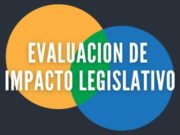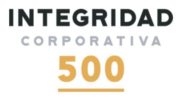- ¿QUIÉNES SOMOS?
- Programas
- Programa de Diagnóstico, Medición y Evaluación de Impacto
- Unidad de Monitoreo de Procesos
- Programa de Convenciones y Mecanismos Internacionales Anticorrupción
- Programa Sectorial en Educación y Rendición de Cuentas
- Programa de Integridad en el Financiamiento Climático (CFIP)
- Programa Editorial
- Iniciativa para el Fortalecimiento de la Institucionalidad de los Programas Sociales (IPRO)
- Programa de Investigación sobre Ciudadanía y Mercados
- BIBLIOTECA
- Comunicados de Prensa
- RENDICIÓN DE CUENTAS
- CONTACTO
Matching discourse with proposals
Five essential components of a real anti-corruption plan for Mexico
Article by Tamara Velasquez and Rafael García
Corruption, a word grievously linked to Mexico, is at the forefront of the country’s upcoming presidential election. The four candidates running to head Mexico’s Federal Government –and manage the 18th largest government budget in the world– have pledged to fight corruption fiercely, at an unseen scale. However, it seems that the strength of their anti-corruption proposals does not yet match their loud voices.
A review conducted by Transparencia Mexicana revealed that most public commitments and proposals published by the candidates are already part of the new Mexican anti-corruption laws. Moreover, the candidates have limited their proposals to very specific topics –like the independence of the country’s prosecutors– leaving out a wide range of actions that are equally important and urgent in addressing corruption. The plans published so far by the four contenders in Mexico’s presidential election are rather basic, lacking the level of detail that is needed for citizens to review and analyse their real commitment.
However, there are still 30 more days before the end of the campaign next June 27th. This is more than enough time for the candidates to reveal how are they planning to obtain what they are promising. Specifically, they must let citizens know which are the most critical mechanisms that they will put in place to prevent, detect, investigate and dismantle corruption networks effectively. By doing so, it will be possible for citizens to review if the loudest voices against corruption also have the boldest proposals to put an end to decades of systemic corruption in the country.
The range of alternatives and tools that the candidates can incorporate into their plans is broad, but there are at least five that are essential to an anti-corruption plan. Transparencia Mexicana has identified them based on the multiple analysis and policy recommendations that have been done by the anti-corruption movement, both in Mexico and globally. These are:
Component 1. A government contractor’s beneficial ownership register
There is extensive evidence that many corruption schemes are connected to public procurement. As an award-winning journalistic investigation has proved, millions of public funds in Mexico are diverted to political campaigns and the pockets of a few through contracts signed with companies that lack experience, are owned by politicians’ relatives and friends or might not even be real. The latter are called shell companies.
One of the boldest tools to address this problem consists of making it mandatory for every company wishing to sell to the government to publicly disclose who their shareholders and owners are. This is what is known as a “beneficial ownership” register. Even though this idea might seem radical, it is already being implemented in several countries. Since 2016, the British Government made it mandatory, and an online public register is now available where anyone can review who’s behind every company operating in the United Kingdom. After the multiple cases revealed by the Panama Papers and the Luxembourg Leaks, the European Union opted to follow the same path and soon will make beneficial ownership data public as a tool to address corruption, money laundering, and tax evasion. Mexico must adopt this measure as quickly as possible.
Component 2. A whistleblowing mechanism
The most effective strategies to detect and dismantle corruption networks rely on whistleblowing mechanisms. When secure channels to denounce corruption schemes are in place, it is more likely that individuals and public officials –sometimes forced to participate or threatened– provide the evidence needed to build solid cases that will lead to the effective prosecution of those involved.
The role of whistleblowers has been vital to identify major cases of corruption and impose substantial penalties on individuals and companies. Among the best whistleblower programs are the ones operated by the Securities and Exchange Commission (SEC) and the Department of Justice in the United States. Thanks to them, the US authorities received over 790 tips only in the last four years regarding violations to the FCPA, a regulation that penalises transnational bribery. These tips were crucial for detecting some of the most emblematic cases of corruption and recover millions of dollars through sanctions imposed by the companies involved, like Odebrecht or Walmart.
So far, none of the candidates have considered the implementation of a new whistleblowing program at the Ministry of Public Administration or the Attorney General’s Office or the provision of safeguards and rewards to those who collaborate with them. Moreover, they have not committed to providing the funding and independence necessary to operate these mechanisms.
Component 3. Smart data infrastructure against corruption: interoperability of legal, banking, and financial data
Corruption networks try to leave the least possible evidence to track their movements. However, to divert thousands or millions of money, they must use channels that leave traces in legal, financial and banking systems. The problem is that following the money with those traces is not an easy task at the moment. The agencies that oversee such operations and posses data about them have been kept relegated from the anti-corruption discussion of the country. Consequently, their data has not been reviewed and structured in a way that is useful to detect and investigate corruption cases.
That is why it is urgent to incorporate these agencies into the country’s anti-corruption strategy. They must provide critical data to track corruption networks in an agile way. For that, it will be necessary to open up their systems to public scrutiny and foster the adoption of data standards that allow connecting data that is currently fragmented among different datasets and information systems. This, in technical terms, is equivalent to making their data “interoperable”.
In Mexico, the most relevant legal, financial, and banking data capable of detecting the movements of corruption networks is managed by four agencies:
- The Internal Revenue Service (SAT, in Spanish) owns data on receipts, taxes, and other fiscal duties.
- The National Banking and Securities Commission (CNBV) regulates and has records of bank transactions, investments, and sales of shares and securities.
- The Financial Intelligence Unit (UIF), part of the Ministry of Finance (SHCP), monitor banking and financial movements that may be related to money laundering.
- The Ministry of Economy (SE) administers the central register of companies in the country, called Sistema Integral de Gestión Registral (SIGER).
It is not only necessary that the next President of Mexico commits to bringing these agencies into the new government’s anti-corruption strategy, Building a smart and open data infrastructure to detect and investigate corruption is also key. This infrastructure must be aligned and connected to the Digital Platform that was created as part of the National Anti-Corruption System.
Component 4. Open and updated land and company registers
Land and company registers are two legal tools that guard information relevant to control corruption. Land registers manage information about property ownership and real-estate operations, such as acquisitions or donations. Company registers safeguard information on mercantile operations such as the establishment of a new business society, the change of address of a company or the updates of its shareholder structure. Both registers aim to provide legal certainty to those involved in real-estate or commercial transactions.
Even though subnational governments manage these registers in Mexico, the federal government regulates and provides guidelines for their operation. So far, such rules have not been adjusted and updated according to the country’s new legal anti-corruption framework. Furthermore, it is unclear if the information and data they contain are up to date, accurate, and truthful.
If the country aims to grant access to this information to the National Anti-Corruption System, the next President of Mexico must embark on a mission to update their operation, review the accuracy of the data, and open these sets up to the public. By doing so, it will be possible to examine that the asset and interest declarations of government officials are real, or in the opposite case, to detect omitted information about the ownership of properties or companies.
When these registers become open to the public, in accordance with the best international practices, citizens and civil society organisations will have access to a powerful tool to prevent or detect conflicts of interests, embezzlement, and money laundering schemes.
Component 5. Reviewing the notary figure and its oversight mechanisms
Notaries are a prominent figure In the legal and judicial tradition followed by Mexico. Most of the time, their function consists in granting security and legal certainty of acts and agreements, such as the signing of a contract between individuals, the creation of a trust or the drafting of a will. However, the figure of the notary has been questioned in recent corruption scandals, such as those in Veracruz, where shell companies were established with the approval of notaries despite clear indications of their deceitfulness.
The underlying problem is that regulation on notaries varies in each of the 32 states of the country. Each state has its notary law and, therefore, there are no homogeneous rules or mechanisms to monitor the actions of notaries. For example, there are only a few states that grant notaries through public tenders, while in the vast majority they are given at the discretion of the governor in office.
If the National Anti-Corruption System is to become a real national effort, it will be necessary to review this figure, change and standardise the notarial practice, and ensure that in the 32 states of the country the figure of the notary will be impartial and independent of political power. Notaries, as a critical figure in the administration of justice in Mexico, can also be great allies in preventing trusts, societies, associations and other legal vehicles from being used by corruption networks to hide their actions and divert millions of dollars.
Twitter
El Poder Judicial debe abonar a la construcción de un 'Estado de Derechos', o un Estado enfocado en proteger el derecho de todas y todos. Cualquier reforma debe servirle a las comunidades y las personas que las integran.
El análisis y la sensibilización sobre el cumplimiento de compromisos regionales en materia anticorrupción debe ser incluyente y de fácil comprensión.
De esta sesión nos quedamos con que nuestra forma de hablar y comunicarnos es una declaración y una posición política. #OCCA propósito de la indispensable discusión sobre el futuro de las notarías en México, @ebohorquez, Director de TMX, se reunió con los responsables del concurso de oposición para entregar las Fiat en Guanajuato.











